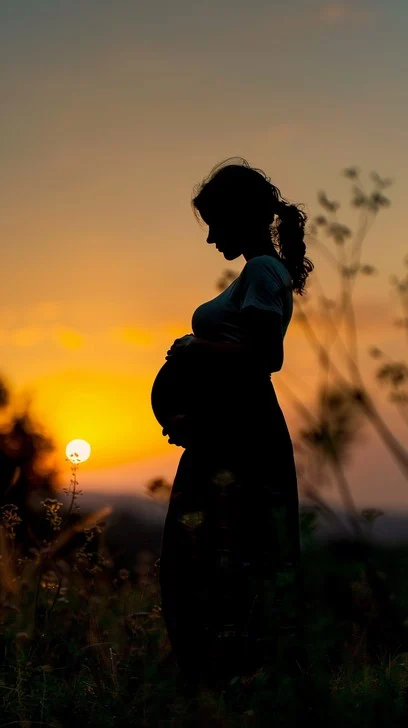Trigger warning: contains description of the death of a child.
On that fateful day, my son displayed a sense of bravery, curiosity, and independence that would ultimately change our lives forever. Just weeks away from his second birthday, little Noah’s life was tragically cut short.
It was our first day moving into my father’s home after my mother had passed away just three months prior. We were settling in to save some money and provide companionship to my father. I stepped into the kitchen for just a few moments, with no doors closed between us, as Noah watched his favorite show, Zoboomafoo, and enjoyed some raisins. My husband was in the garage with my dad.
The French doors leading to the backyard connected directly to the inground pool. Noah, unexpectedly and silently, opened a door I assumed was secure. When I returned to check on him, he was gone. I called out for him, thinking he was simply playing hide and seek.
“Noah! Where are you?!” I sang out, searching the house while my husband and father began looking outside. Moments later, I was jolted by a scream and a splash. My husband dove in, my father called 911, and I stood frozen in the kitchen, unable to comprehend what was happening. I still hear my father shouting, “He’s in the pool! Goddammit! He’s in the pool!”
It hadn’t crossed my mind that a home with a pool required heightened vigilance. When my mother-in-law expressed concern about Noah being outside alone, I assured her it would never happen. She lived in Florida, where accidental drownings of children occur almost daily. I wish I had realized the risks, despite living in the four-season climate of New Jersey.
I underestimated Noah that day. He was a good boy—no more curious than any toddler. In fact, that very morning, my father and I had discussed how attached Noah was to me. I mention this because any mother reading this might think it could never happen to them; I once believed the same. I can’t say for certain if the door was locked. Had I been more aware of water safety, I would have ensured it was. Just as we secure hazardous materials under the sink, pools, ponds, and even the charming brook behind our home must be treated with the utmost seriousness.
According to the CDC, children aged 1 to 4 face the highest risk of drowning, with most incidents occurring in residential pools. Apart from congenital birth defects, drowning is the leading cause of death for children in this age group and the second leading cause of unintentional injury-related death for kids aged 1 to 14, following motor vehicle accidents.
If I had been more educated about water safety and fencing options, Noah’s life might have been saved. The CDC states that a four-sided isolation fence—separating the pool area from the house—can reduce a child’s drowning risk by 83% compared to three-sided property-line fencing. This was the foundation for the town ordinance established in Noah’s name.
In the months following Noah’s passing, we grew closer to our clergy. Almost exactly a year after the tragedy, our synagogue’s cantor informed us that she had applied for a permit to install a swimming pool at her home in the same town where Noah died. She learned that fencing laws had changed, whispered in a tone that indicated the changes were a direct result of Noah’s accident.
We were overwhelmed with emotions. The following day, my husband reached out to the town for more information. We discovered the existence of the Child Fatality and Near Fatality Review Board, which aims to prevent similar accidents. Noah’s case was presented anonymously, without our knowledge. We were struck by the sight of his initials, N.L., throughout the documents. We urged the committee member responsible for the ordinance to use Noah’s name and photo, wanting the law to represent a real person, not just a statistic. The ordinance, now officially known as Noah’s Ordinance, mandates that all new pool constructions must have a four-sided barrier with a locking entrance. In a bittersweet way, it felt as if Noah was alive again.
You may be thinking, “This could never happen to me. I watch my child closely. My child can swim. We don’t have a pool.” I’ve met many mothers since Noah’s passing who have shared their near-miss stories—children slipping out unnoticed, darting into the street, tripping down stairs, or roughhousing that went wrong. Most people have responded with sympathy and compassion.
The loss of a child is a complex tragedy that is challenging to discuss. Those most uncomfortable with it often have all their children alive and well. It is every parent’s greatest fear. However, I know that lives have been saved because of Noah’s story. Please, be vigilant around water. Educate yourself and others. Ensure that all doors to swimming areas are secured. Don’t fall into the trap of thinking, “This could never happen to me.”
For more insights about parental responsibilities, consider reading this related blog post. If you’re looking for reliable at-home insemination kits, check out CryoBaby, where you can find reputable products. Additionally, CCRM IVF provides excellent resources for pregnancy and home insemination.
Summary:
The heart-wrenching loss of my son Noah serves as a crucial reminder of the importance of water safety for all parents. Drowning is a leading cause of death among young children, often occurring in residential pools. Increased awareness, education, and proper safety measures, such as fencing, can prevent such tragedies. It’s vital for parents to remain vigilant and proactive around water to ensure the safety of their children.

Leave a Reply